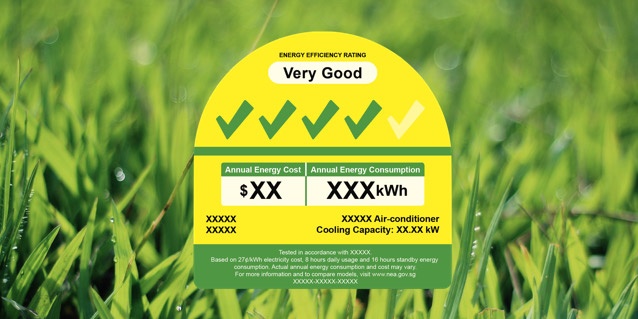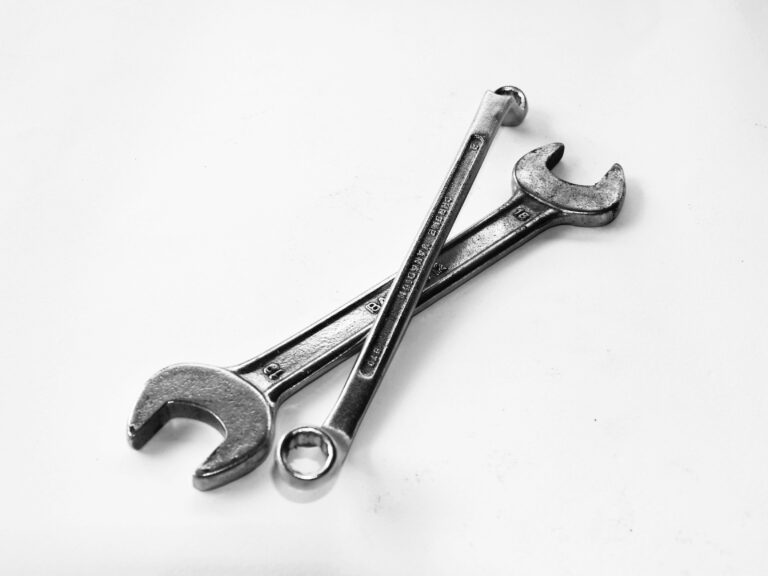The National Environment Agency (NEA) of Singapore is a public organization that strives for a sustainable environment through various campaigns and efforts. One of which, is through the creation and usage of energy labels with green tick measurements to help layman consumers better identify energy efficient appliances. The image below is an example of how the NEA energy label looks like:

Does it look familiar to you? You might vaguely recall that you must have seen it somewhere before. It is mandatory for many electrical goods sold in Singapore to be labelled for the benefit of consumers. Knowing that these labels exist, have you ever wondered what do these NEA ticks mean? NEA’s energy labels are energy rating systems that range between 1 to 5 green ticks and are measured differently for various product categories (e.g. a 5 tick energy usage criteria for air-conditioners will be different from a 5 tick toaster). In this article, we will explain how to read the energy labels, what do the green ticks mean and why do they matter.
Minimum Energy Performance Standard (MEPS)
The MEPS refers to regulatory standards set by NEA for electrical appliances to be sold here in Singapore. If a product does not meet the MEPS level, it will not be allowed to be sold in Singapore. The NEA keeps a continuous effort to improve energy efficiency standards to help Singapore households be more energy efficient and ultimately combat climate change, resulting in a more sustainable environment. Back in June 2021, NEA had announced that they will raise the MEPS level for four appliance types, that starting from 2022, these four appliances must have at least two green NEA ticks before they can be sold:
1. Refrigerators
2. Clothes dryers
3. Casement air-conditioners
4. Window air-conditioners
In the same announcement, split-type air-conditioners will have their MEPS raised by 7% within the NEA two-tick range, which means that less energy efficient models (below the new 2-tick standards) will not be allowed to be sold in Singapore.
NEA Energy Label: Tick Rating for Air-Conditioners
Air-conditioners are broken down into two main categories:
1) Residential type air-conditioners that encompasses casement, window, single-splits, and multi-split air-conditioners.
2) Commercial type air-conditioners that refers to VRV/VRF air-conditioning systems.
This section will only cover the first category, to better understanding tick ratings for residential types of air-conditioners. From 2022 onwards, the minimum required ticks would be 2 ticks for all residential types of air-conditioners to be sold. Based on a minimum of 2 ticks, here is what each tick represents on the energy efficiency level for NEA Labels:
2 Ticks: Fair
3 Ticks: Good
4 Ticks: Very Good
5 Ticks: Excellent
The criteria for energy usage for each tick range is not fixed and has been constantly evolving as NEA pushes for a more sustainable Singapore where manufacturers are encouraged to introduce product with a greater energy efficiency usage. One example would be in 2014, where there was a revision in the energy labels that put most models from 4 ticks under the old system, to 2 ticks in the new revised format. Therefore, as technology progresses, higher efficiency models will be minimum requirement to be sold in Singapore.
For the math and technical formula lovers, here’s an example of the criteria for a 5-tick multi-split (inverter) air-conditioner:
“Weighted COP ≥ 5.50, COP100% ≥ 4.86 and Standby power ≤ 9 x N”
*COP100% is defined as the ratio of total cooling capacity to effective power input at full load cooling capacity
**For split (inverter) type air-conditioners, the model shall meet both the minimum COP100% and weighted COP
***Weighted COP = 0.4 x COP100% + 0.6 x COP50%
****N is the number of indoor and outdoor units
*****Standby power is expressed in Watts
If you love these technical terms and formulas, check out the NEA Energy Label website where they give you a breakdown for each individual category and its requirements for each tick range.
How does the NEA Ticks matter for me as a consumer?
The greater the number of ticks, the more energy efficient the product would be. One thing to note is that the more energy efficient models usually come with a higher price tag. Despite the higher initial cost, in the long run as a consumer, you are most likely to spend less overall given the energy savings throughout the years. By energy savings, the assumption is that the lifespan of a residential air-conditioner is 7 years by NEA standards. If you air-conditioner survives longer than 7 years, the cost savings could be greater if your aircon is well maintained and still in good efficient condition.
Even with 5 ticks being classified as the most energy efficient model out there, we may not always recommend 5 tick air-conditioners to everyone. By getting a 5-tick air-conditioner that is oversized/undersized for your usage, you may not be able to achieve proper cost-savings in the long run. Firstly, you will have to come to an understanding of what type of air-conditioners you need in your given situation (e.g. your aircon BTU requirement is dependent on the room size) before deciding on the number of ticks for your aircon. Remember, the main objective for the NEA energy label ticks is to allow consumers to identify the different energy efficient models and to look at the overall long run costs, rather than just the upfront costs involved during the purchase of a new air-conditioner.
Based on the NEA Ticks, what type of air-conditioners should I get?
It really depends on your usage, current budget, and your perspective of the cost-savings in the long run for an energy efficient model. There are too many factors involved for a one-size fits all solution. However, if you are environmentally conscious and wish to do your part and contribute to a greener society, then you should opt for more ticks the better. If all these information has gotten you confused, and you are unsure of how to decide, you are always welcomed to contact our team for further advice. Here at Infinity Air, we have over 20+ years of experience as an aircon contractor, completing over 15,000+ aircon servicing jobs and 500+ residential and commercial projects. We have complete confidence in aiding you with aircon solutions and help make a difference in your home.


